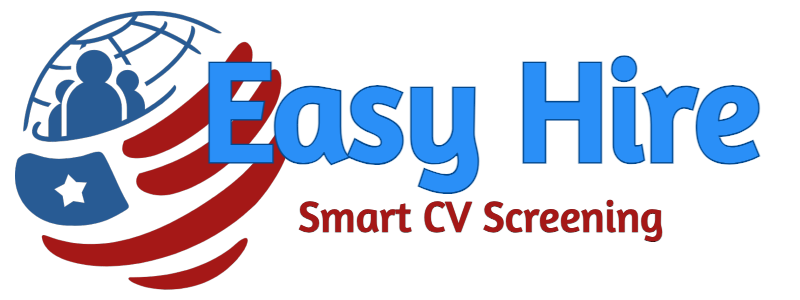How to Choose the Best ATS for Your Business Needs
Recruiting top talent is a cornerstone of business success, but with so many Applicant Tracking Systems (ATS) available, how do you choose the best ATS for your business? Selecting the right ATS can streamline your hiring process, improve candidate experience, and ultimately save time and resources. In this guide, we’ll walk you through the key considerations to help you make an informed decision for your ATS selection.
Hiring top-tier talent has never been more competitive. Businesses—no matter their size or industry—need a modern, efficient recruiting process to attract and hire the right employees quickly. That’s where an Applicant Tracking System (ATS) comes in. But with countless options available, how do you choose ATS platforms that ensure business success?
In this comprehensive guide, we’ll deep-dive into the process of ATS selection, covering everything from the most essential features to look for, to real-world examples and expert-backed tips. Whether you’re a startup hiring your first team or an established company scaling globally, this guide is designed to help you choose an ATS that meets your specific needs.
Table of Contents
Why Choosing an ATS Is Critical
Let’s start with the basics—why is choosing an ATS such a vital decision for your business? Because the right ATS doesn’t just keep resumes organized. It becomes the foundation of your recruiting engine. From the moment you post a job to the new hire’s first day, the system can manage communications, screen candidates, collect hiring data, reduce administrative overhead, and more.
Here’s what happens when you use the best ATS for business success:
- You improve candidate experience through streamlined and timely communication.
- Recruiters save hours weekly on manual, repetitive tasks.
- Team collaboration gets easier with shared notes and decision tracking.
- You reduce costly hiring errors by making data-informed decisions.
- You scale faster with less hassle as hiring needs grow.
Companies that fail to take ATS selection seriously often end up with outdated systems that slow down recruiting, frustrate candidates, and cost top talent. According to EasyHireApp, companies that use AI-powered ATS solutions reduce their time-to-hire by up to 50% while improving the quality of hires.
Key Features to Consider When You Choose ATS Platforms
Finding the best ATS for your business means identifying the features that match your unique hiring goals. While all Applicant Tracking Systems aim to make hiring easier, not all are created equal. Prioritize these six core capabilities during your ATS selection process:
1. AI-Powered Resume Screening
One of the biggest ATS innovations in recent years is AI resume screening. Manually going through hundreds of resumes is time-consuming and often biased. With AI, you can automate first-round screening based on skills, keywords, job history, and more.
Look for platforms like EasyHireApp that leverage AI to:
- Automatically analyze and rank resumes by job fit.
- Identify top candidates faster—often within minutes.
- Reduce bias by focusing purely on qualifications and relevance.
- Flag resumes with high potential for future roles.
Example: A retail chain previously took 10 days to shortlist applicants for entry-level sales positions. After switching to an AI-driven ATS, they reduced this to just two days—improving speed without sacrificing quality.
2. Customizable Workflows
Not all businesses hire the same way. A corporate law firm has a very different process than a design startup. That’s why your ATS should allow full workflow customization. This is a crucial factor when you choose an ATS.
Ensure your future system lets you:
- Create configurable hiring stages—from phone screening to final interviews.
- Set approval chains for job postings and offers.
- Automate repetitive actions like rejection emails or interview invitations.
- Customize hiring flows for different departments or job types.
This flexibility means your ATS can adapt as your team grows and hiring practices evolve.
3. Candidate Relationship Management (CRM)
Having a CRM component in your ATS is a game-changer. It helps you build talent pipelines and nurture passive candidates over time—so you’re not scrambling to fill roles from scratch every time. When considering the best ATS for business, look for strong CRM capabilities.
When evaluating products during your ATS selection, ask:
- Can the system keep records of past applicants for future openings?
- Can I tag or categorize candidates for ongoing engagement?
- Is candidate communication centralized and trackable?
CRM features are especially valuable when you’re hiring frequently for similar roles or building long-term campus recruiting strategies.
4. Integration Capabilities
Your ATS shouldn’t operate in a silo. It needs to play nicely with the rest of your HR toolkit. This is a vital consideration for efficient ATS selection.
Confirm whether the system integrates with popular tools such as:
- Payroll systems (e.g., ADP, Gusto)
- HRIS platforms (e.g., BambooHR, Workday)
- Background check services (e.g., Checkr)
- Video interview platforms (e.g., Zoom, EasyHireApp Video Interview)
- Calendars and email providers (Google Workspace, Outlook)
Example: A fast-growing healthcare nonprofit dramatically cut its time-to-hire by adopting an ATS that integrated with its payroll and compliance systems. This allowed for seamless transitions from candidate to employee.
5. Analytics and Reporting
You can’t improve what you can’t measure. That’s why analytics is key when you choose ATS software.
Look for built-in reports that help you track:
- Time to fill open positions.
- Source of hire – which platforms are delivering results? For insights, check external resources like SHRM.
- Interview-to-offer conversion rates.
- Diversity benchmarks and DEI tracking.
- Hiring manager responsiveness.
Real-time, easy-to-understand dashboards help you make smarter hiring decisions and justify investments in tools and job advertising.
6. User-Friendly Interface
Your recruiters aren’t the only people using the system. Hiring managers, interviewers, and even candidates need to engage with your ATS. If the interface isn’t intuitive, it’ll slow things down. A user-friendly interface is paramount for the best ATS for business.
Make sure the platform is:
- Easy to navigate for all user types.
- Mobile-friendly so managers and applicants can access it on the go.
- Designed with clean layouts and clear instructions.
- Equipped with collaborative tools like shared scorecards and comments.
Tip: Ask for a demo or pilot period to test usability before signing any contracts during your Choosing an ATS process.
Real-World Success: ATS Transformation in Action
Let’s bring it all together with a real-world example.
A mid-sized SaaS company was receiving more than 2,000 applicants a month. Manually tracking applications across spreadsheets was inefficient and error-prone. Worse, top candidates often fell through the cracks due to delayed response times.
After investing in an AI-powered ATS that included customizable workflows, the company accomplished the following in less than six months:
- Screening time decreased by 70%, thanks to smart resume filtering.
- Diversity hires rose by 30% due to unbiased evaluation.
- Candidate satisfaction (measured via Net Promoter Score) increased by 40%.
- Hiring managers saved 20+ hours a month by using templated communications and automated scheduling.
This transformation didn’t require a massive HR overhaul—just the right tech partner and a careful ATS selection.
5 Actionable Tips for Effective ATS Selection
Choosing the best ATS for business comes down to asking the right questions and doing your homework. Here’s how to approach the process strategically:
- Define Your Needs—Clearly
Start with a list of current challenges. Are you drowning in manual processes? Struggling to find quality candidates? Lacking team collaboration? Then define your goals. Is it faster time-to-hire? A better candidate pipeline? Scalability? Establish must-have and nice-to-have features before talking to vendors. This clarity is key for a successful ATS selection.
- Test Systems with Real-World Scenarios
Don’t make your decision based on a sales pitch. Use free trials or sandbox demos to perform actual recruiting tasks, such as posting a job, shortlisting applicants, and scheduling an interview. Involve multiple stakeholders—from recruiters to hiring managers—in the trial. Their feedback is crucial when you choose ATS platforms.
- Read Reviews and Case Studies
Look beyond star ratings. Look for detailed testimonials from companies similar to yours. If possible, ask the vendor for references you can contact directly to hear about support quality and real-life outcomes. Sites like G2, Capterra, and TrustRadius are excellent for unbiased comparisons.
- Plan for Future Growth
Your hiring needs might change dramatically in 6–18 months. Choose an ATS that can handle multi-location recruiting, support multiple user roles and admin levels, expand integrations as your HR tech stack grows, and provide analytics for strategic workforce planning. It’s always better to scale into an ATS than outgrow it quickly.
- Evaluate Customer Support and Onboarding
Even the best software requires strong onboarding and responsive support. Ask: Is there a dedicated success manager? Are tutorials and knowledge bases available? How quickly do they respond to tech issues? Do they offer training for team members? Strong support = smoother implementation and faster ROI. This is a non-negotiable for the best ATS for business.
FAQs: What You Need to Know Before You Choose ATS Tools
1. What makes a good ATS?
A good ATS aligns with your hiring process, saves time, improves candidate experience, and offers analytics to support smarter decisions. It also integrates well with your existing tools and grows with your business. The best ATS for business should be a strategic partner.
2. How does AI resume screening work?
AI resume screening uses algorithms to assess resumes based on keywords, skills, education, and experience relevant to a job description. Platforms like EasyHireApp use AI to rank resumes fairly and accurately, reducing time-to-fill and selection bias. This is a key feature to look for during your ATS selection.
3. What is the difference between ATS and CRM?
An ATS manages the recruitment workflow, from job posting to hire. A CRM (Candidate Relationship Management) tool focuses on nurturing relationships with candidates—even those who aren’t currently applying. Many modern systems, often considered the best ATS for business, combine both.
4. How can AI reduce bias in hiring?
AI, when properly trained, can remove subjective factors by focusing on merit-based data. For example, it ignores names, photos, and university pedigree, concentrating instead on skills, certifications, and job history. This promotes more diverse hiring and is an important aspect when you choose an ATS.
5. Do small businesses need an ATS?
Yes! Even small businesses can benefit. A lightweight, affordable ATS simplifies hiring and ensures nothing slips through the cracks—especially when HR is a one-person department. There are ATS options tailored for small businesses that can be the best ATS for business on a smaller scale.
6. How do I know if an ATS is scalable?
Look for features like multi-location recruiting support, multiple user roles, and expandable integrations. Additionally, the system should offer analytics and reporting tools that help with strategic workforce planning as your business grows. Scalability is crucial for long-term ATS selection.
7. What should I look for in ATS customer support?
Choose a vendor that offers dedicated success managers, comprehensive tutorials, responsive tech support, and training for your team. Strong support ensures smoother implementation and faster ROI, a key indicator of the best ATS for business.
8. How can an ATS improve the candidate experience?
An ATS can streamline communication, provide timely updates, and simplify the application process. Features like automated emails, mobile-friendly interfaces, and clear application instructions all contribute to a positive candidate experience. This is a major benefit when you choose ATS platforms thoughtfully.
9. What integrations should I prioritize in an ATS?
Look for integrations with payroll systems (e.g., ADP, Gusto), HRIS platforms (e.g., BambooHR, Workday), background check services (e.g., Checkr), video interview platforms (e.g., Zoom), and email/calendar providers (e.g., Google Workspace, Outlook). Seamless integration is a hallmark of a good ATS selection.
10. Are free trials available for ATS platforms?
Many ATS providers offer free trials or sandbox demos to test their features. Take advantage of these to perform real-world recruiting tasks and evaluate the system’s usability and functionality before you choose an ATS decisively.
Conclusion: Choosing the Best ATS for Your Business
There’s no one-size-fits-all solution when it comes to ATS selection. But by focusing on your business needs, investing in the right features, and seeking a user-friendly, scalable solution, you can transform your hiring process quickly and effectively.
Choosing an ATS isn’t just a back-end decision—it directly impacts the type of talent you attract and hire. From small startups to large corporations, businesses that choose ATS platforms strategically position themselves for long-term recruiting success. The best ATS for business is the one that empowers your specific goals.
Ready to upgrade your hiring game? Explore how a platform like EasyHireApp combines AI-driven resume screening, collaborative tools, and intuitive design to help you streamline recruitment and win top talent.
Learn More About Choosing an ATS
Start Your Free Trial Today
Learn more about Choosing an ATS and what EasyHireApp can do to accelerate your hiring journey.








